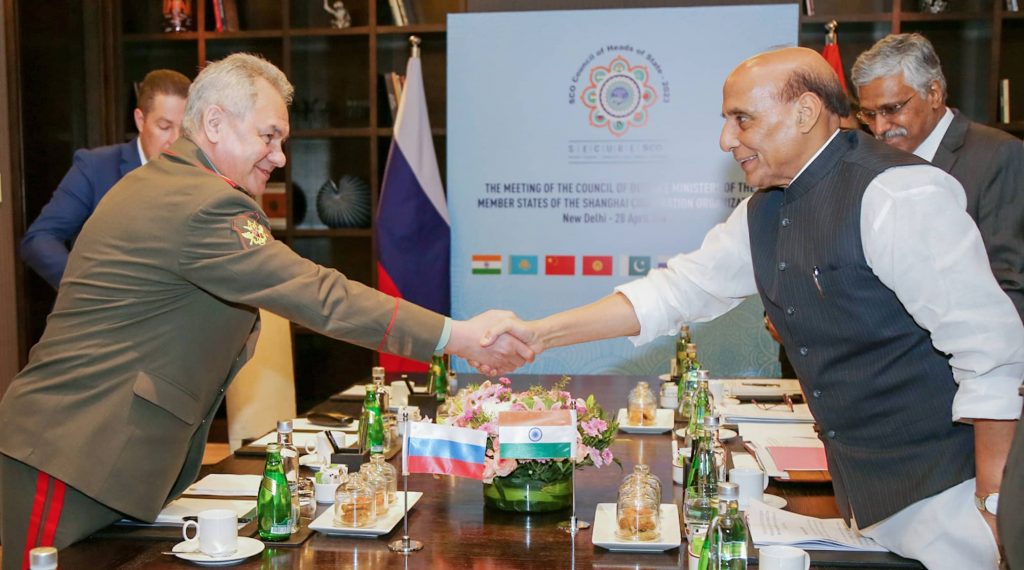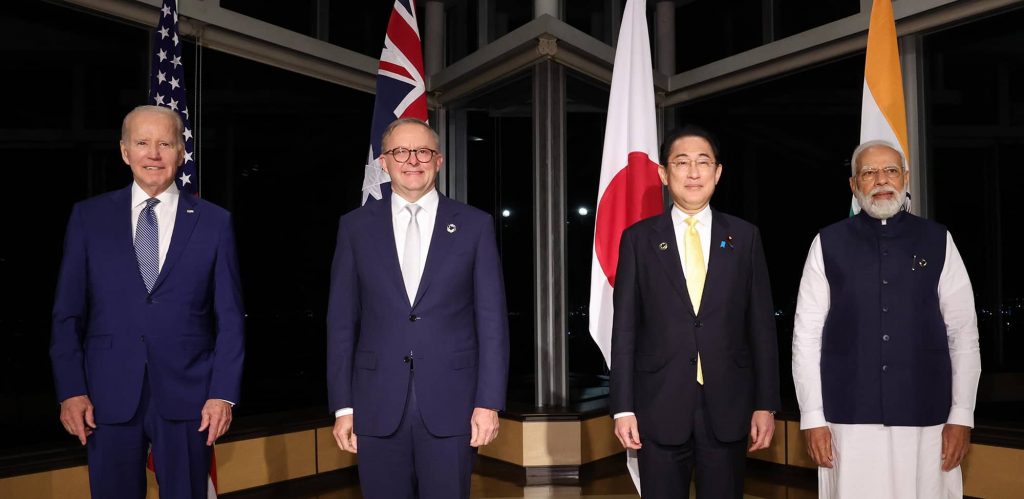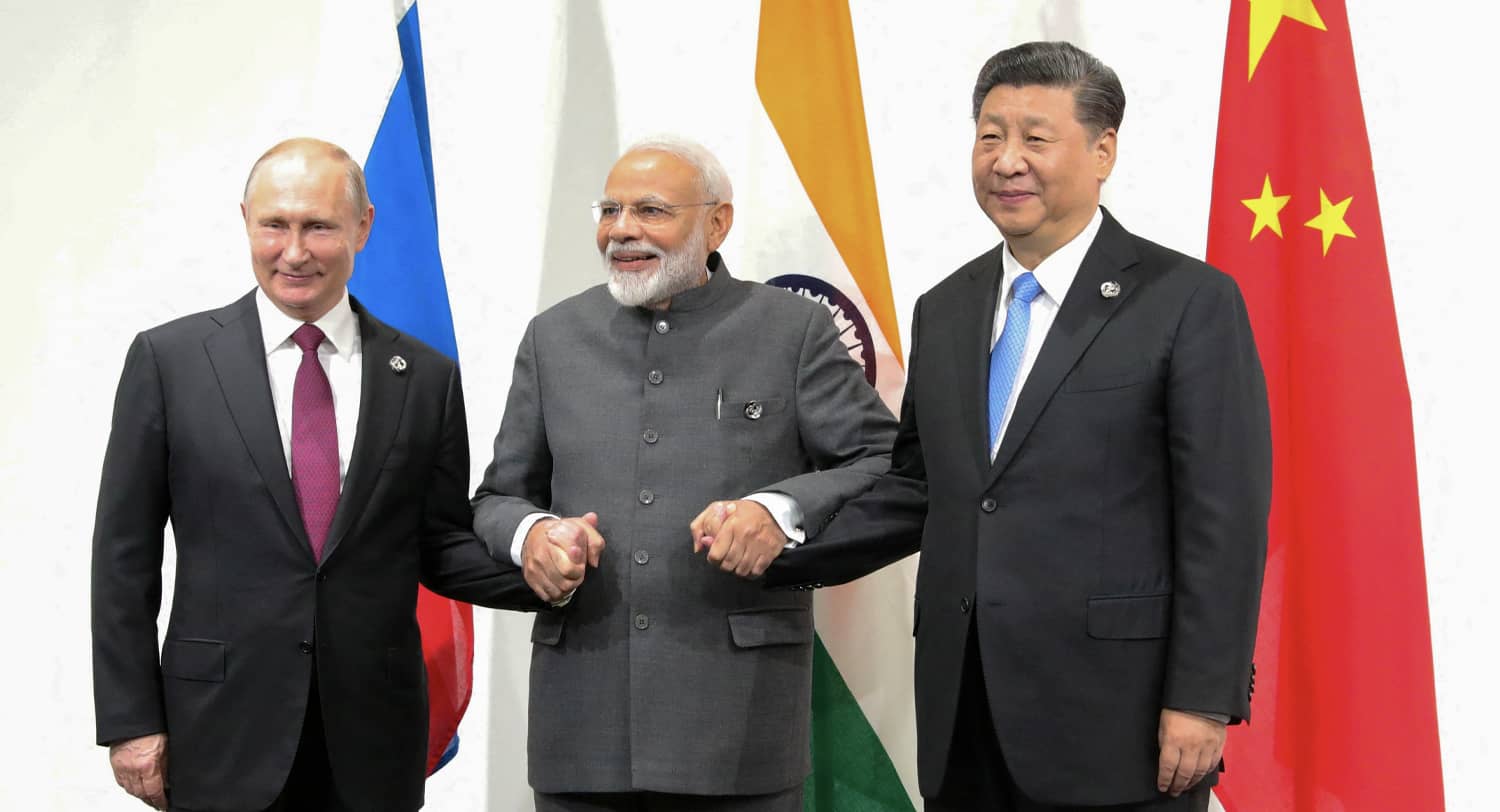Introduction: Recurring Pakistani And Growing Chinese Challenges
India faces disputed boundaries and territorial claims with both Pakistan and China. Though the direct threat from Pakistan has become less salient, the boundary dispute with China remains a massive problem. Furthermore at a time when the US and China are locked in a global competition, China’s assertiveness in projecting its authoritarian governing model in India’s neighborhood is a normative challenge to Indian democracy.
Negating its long-held official position that bilateral negotiations should settle territorial disputes, China has brazenly proclaimed that it has no problem using force against India to resolve bilateral disputes in its favor. The Chinese aggression against India in the Galwan Valley in 2020 led to the mobilization of troops on both sides. Since September 2020, the two sides have managed to maintain a fragile peace, but China has been flexing its military muscles. The Chinese provocations in the Indian State of Arunachal Pradesh should also be seen as part of Beijing’s move to assert territorial claims.
China’s continued assertiveness and refusal to restore the territorial status quo have impelled India’s foreign policy to shift focus towards America. Partnership with the US is now seen in New Delhi as crucial to India’s security and strategic policy. In the Indian Ocean region, the Sri Lankan government default on Chinese loans for the Hambantota port has only increased India’s strategic concerns. New Delhi seeks US military assistance to emerge as a dominant power, as China’s navy expands in the region.
The worsening India-China border issue may have increased nuclear risks. India’s insecurities have risen due to the expansion of Chinese nuclear warheads, with Beijing choosing to merge some of its conventional and nuclear capabilities. This will impact India’s strategic calculations, with the Indian subcontinent entering an accelerated nuclear arms race due to China’s dangerous expansion of atomic warheads and advanced delivery systems. To alleviate these concerns, India is undertaking nuclear modernization, and this signals a shift in India’s nuclear strategy.

India’s Russia Dilemma
India’s military standoff with China has shown Russia’s importance for India as Moscow continues to be the key supplier of defense equipment.
In India, there has been certain warmth for Russia dating back to the Soviet era. After India’s independence from British colonial rule in 1948, it was the Soviet Union that helped India build an industrial base and acquire a military capability. The USSR also opposed several Anglo-American designs (favoring Pakistan) to undermine India’s governing authority in Jammu & Kashmir through the veto power in the UN Security Council. Since the end of the Cold War, India’s mainstream political elite has supported a policy of building closer relations with the US while maintaining strategic autonomy, implying India will not join any military alliance.
According to the latest data from the Stockholm Peace Research Institute (SIPRI), Russia was India’s largest arms supplier over the past ten years, even though Russia’s share of India’s arms imports fell from 64 to 45 percent. During the past five years, Moscow supplied New Delhi with about $13 billion of weapons and military equipment.
Today Russia accounts for around 90% of the Indian Army’s weapon systems. India’s armored columns are comprised of T-90 tanks manufactured in India under license without technology transfer. The Indian Navy’s share of Russia’s equipment is also substantial, though not to the same extent as that of the Indian Army. India’s Rajput-class destroyers, Talwar-class frigates, and Veer-class missile corvettes are of Russian origin. The INS Vikramaditya, India’s sole aircraft carrier, is a Soviet-built Kiev-class vessel. The Indian Navy acquired its only nuclear-powered attack submarine, INS Chakra, on lease from Russia. As far as the Indian Air Force is concerned, approximately 70% of its equipment is Russian in origin. The Sukhoi Su-30 MKI fighters, MiG-29UPG and MiG-21 fighters, IL-78 tankers, Mi-17 utility helicopters, the Mi-35 attack helicopters, and the Mi-26 heavy-lift helicopters are all Russian-made. India has also bought the S-400 air defense systems from Russia.
Russia’s current influence in India’s strategic decision-making arises from this willingness to supply sophisticated weapons systems to India. However, changing strategic realities have brought new constraints. The ongoing war in Ukraine has burdened Russia’s ability to meet its own ongoing equipment needs, let alone India’s requirements. Additionally, there appears to be a concern in India’s strategic establishment that if Russia’s war machine cannot defeat a weaker adversary like Ukraine, how can Russia-made military equipment help India stand up against China? Finally, India must balance its immediate need to import advanced weapons with a policy of developing its indigenous defense industry.
In short, to meet its evolving needs and balance its existing dependence on Russian military imports, India has been seeking to upgrade defense partnerships with multiple countries including the US, Israel and France.
India’s Diplomacy: Risk Mitigation through New Bilateral Partnerships
On the diplomatic front, while calling for a return to diplomacy and dialogue, India has abstained from several UN resolutions condemning Moscow’s aggression against Ukraine. Many Western countries have termed India’s response as contradictory to its declared democratic values, but India’s state apparatus believes it is acting in conformity with its long-standing policy of strategic autonomy, dating back to the non-aligned movement.
New Delhi-Moscow defense cooperation is seen as vital to defend India’s Himalayan border with China, while strong Indo-US security cooperation is crucial to mitigating threats from the Indian Ocean. The US and Russia each play an important role in India’s bid to acquire long intermediate-range ballistic missiles, fighter aircraft, stealthy drones, submarines, anti-satellite weapons, improved nuclear weapons, and space warfare systems.
Although the security establishment in Pakistan influences the ruling Taliban in Afghanistan, India has reached out to the new rulers of Kabul. This outreach involves huge risks as it may encourage many international donors to start humanitarian assistance without changing the Taliban’s repressive governing methods. Relations with Bangladesh are warm again. As Bangladesh has made a remarkable economic and social transformation in recent years and has also outstripped Pakistan economically, there is admiration in India for its achievements.
India has successfully enhanced cooperation with Japan, the European Union, Israel, Saudi Arabia, UAE, Vietnam, Indonesia, and Singapore. India seeks to modernize its diplomatic corps in order to acquire the ability to manage issue-based coalitions. Since Russia’s aggressive war against Ukraine has led to dramatic shifts in the German strategic orientation on the issue of military modernization, India is particularly keen to take advantage of Germany’s willingness to play a more significant role in the Indo-Pacific.
The I2U2 Quad comprising India, the US, Israel, and the UAE exemplifies New Delhi’s ‘selective alignment’ approach while marking a significant turning point in India’s engagement with the Middle East. India has often viewed West Asia either through the lens of the Pakistan issue or from the standpoint of the Gulf destinations for Indian labor. The I2U2 could help India to become a reliable partner in infrastructure projects.

Cautious, Balanced Multilateralism
India is a member of many multilateral organizations, some of which are even contrary to each other. This year India has become the head of both the Shanghai Cooperation Organisation (SCO) and G-20. It is also a member of the BRICS (Brazil, Russia, India, China, and South Africa) and RIC (Russia-India-China) forums and more recently the Quad (US, Japan, Australia and India).
The SCO continues to be a China-led grouping. It was conceived in the late 1990s at a time of America’s unipolar moment when Russia and China were concerned about the growing influence of Washington on their periphery, especially in Central Asia, following the disintegration of the USSR. When India began building bridges with the US after the end of the Cold War, it was not sure about the direction of this engagement. Therefore, India also joined China and Russia in voicing its concerns with US hegemony. New Delhi hoped that Russia would help India balance China’s growing power. But it has become clear that India entertained unrealistic expectations from its engagement with the SCO. The China-Pakistan nexus will directly constrain India’s ability to shape the SCO agenda on terrorism and extremism. Moscow’s growing bonhomie with Beijing will also limit New Delhi’s ability to penetrate Central Asia.
The Quad is an expanded multilateral of various security bilaterals and trilaterals. Its primary focus is to increase cooperation in non-military domains, focusing on infrastructure development to counter China’s Belt and Road Initiative in the Indo-Pacific region. The ‘China factor’ has doubtless strengthened India’s ties with the US, Japan, and Australia under the Quad, underling that the India-China rivalry has gone beyond disputed boundaries to assume global proportions.
Conclusion
Faced with an unfriendly external environment involving a nuclear-armed Pakistan and a territorially hungry China, India is seeking sophisticated military hardware – long-range power projection platforms such as ships, submarines, aircraft. India must develop strong sea, air, space, nuclear, and cyber capabilities to counter its myriad security challenges through a judicious combination of indigenous technological development, acquisition of military capabilities from abroad, and intelligence sharing with partners. While maintaining ongoing important ties with Russia, India’s strategic imagination is shifting to the Indo-Pacific domain as India’s security challenges become continental in nature.



